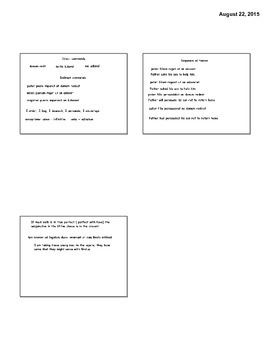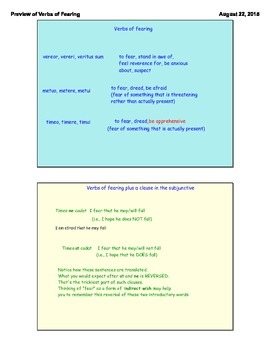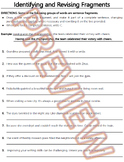5 results
10th grade latin resources for SMART Notebook

Latin GCSE. Subjunctive. Introducing Indirect Commands.
This resource starts with some examples of direct commands. The sentences are then transformed into indirect commands, using the subjunctive. You can then look at the verbs which require the subjunctive, plus the exceptions to the rule. There is then a series of sentences to explain the sequence of tenses used with this structure.
If you need this resource in word let me know!
Subjects:
Grades:
9th - 12th
Types:

Latin GCSE. Active to passive subjunctive.
On the first page, pupils need to put each of the active subjunctive verbs into the passive. The second page includes sentences to translate, which feature a selection of active and passive subjunctive structures.
Subjects:
Grades:
9th - 12th
Types:

Latin GCSE. Comparative adjectives.
Notebook file to introduce comparatives.
1st/2nd declension adjectives, and 3rd declension adjectives.
Irregular comparatives.
Use of comparatives with quam.
Simple translations, and some sentences about members of the class that can be adapted.
Subjects:
Grades:
9th - 12th
Types:

Latin GCSE. Identify the use of the subjunctive.
This resource focuses on the four most straightforward uses of the subjunctive: Exhortation, 3rd person command, purpose clause and indirect commands. Pupils should discuss each of them in turn - how they are formed, how they can spot them in context. They should then categorise the sentences on the board accordingly. Finally, they can translate the sentences.
Subjects:
Grades:
9th - 12th
Types:

Latin GCSE. Verbs of fearing. Subjunctive.
A resource that introduces verbs of fearing, the key verbs which introduce subjunctive subclauses, and includes a set of sentences to translate.
Subjects:
Grades:
9th - 12th
Types:
Showing 1-5 of 5 results









